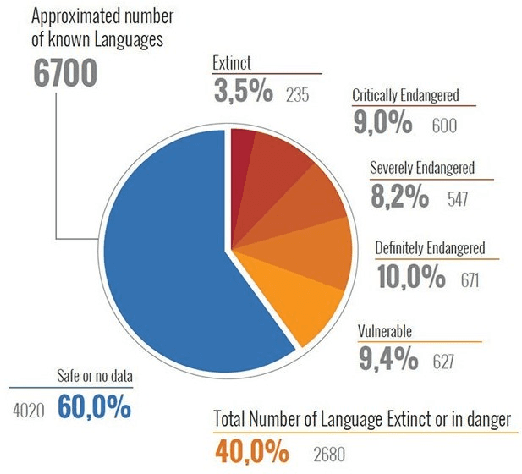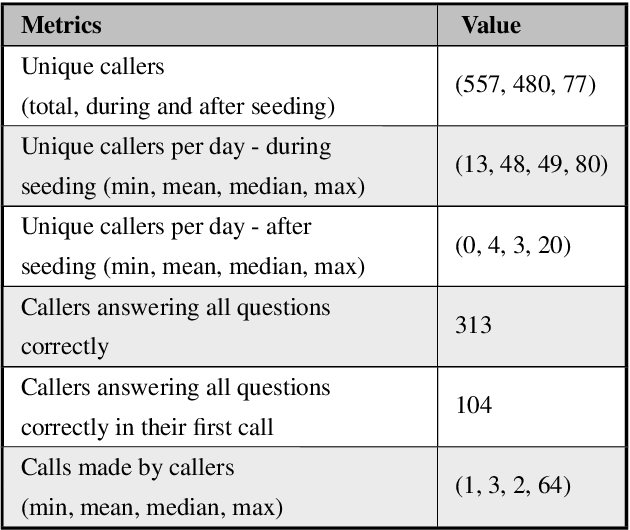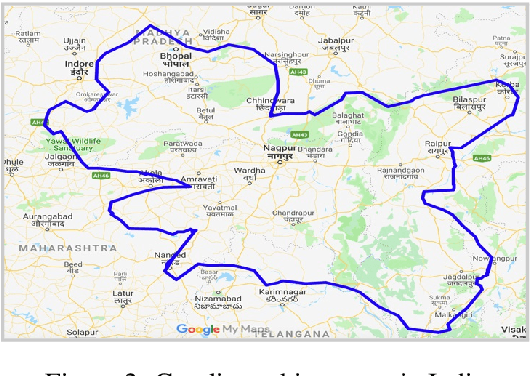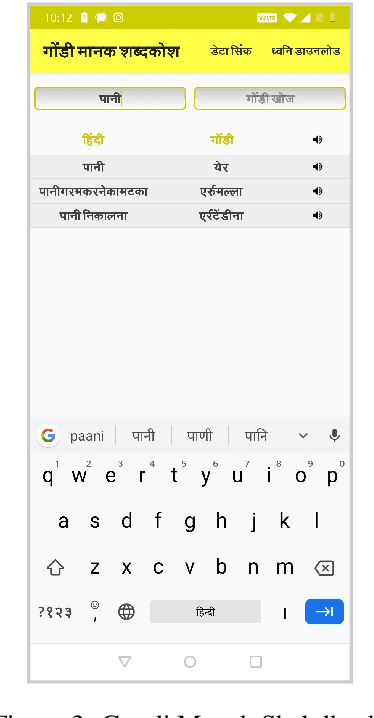Venkanna U
Learnings from Technological Interventions in a Low Resource Language: Enhancing Information Access in Gondi
Nov 29, 2022Abstract:The primary obstacle to developing technologies for low-resource languages is the lack of representative, usable data. In this paper, we report the deployment of technology-driven data collection methods for creating a corpus of more than 60,000 translations from Hindi to Gondi, a low-resource vulnerable language spoken by around 2.3 million tribal people in south and central India. During this process, we help expand information access in Gondi across 2 different dimensions (a) The creation of linguistic resources that can be used by the community, such as a dictionary, children's stories, Gondi translations from multiple sources and an Interactive Voice Response (IVR) based mass awareness platform; (b) Enabling its use in the digital domain by developing a Hindi-Gondi machine translation model, which is compressed by nearly 4 times to enable it's edge deployment on low-resource edge devices and in areas of little to no internet connectivity. We also present preliminary evaluations of utilizing the developed machine translation model to provide assistance to volunteers who are involved in collecting more data for the target language. Through these interventions, we not only created a refined and evaluated corpus of 26,240 Hindi-Gondi translations that was used for building the translation model but also engaged nearly 850 community members who can help take Gondi onto the internet.
Learnings from Technological Interventions in a Low Resource Language: A Case-Study on Gondi
Apr 21, 2020



Abstract:The primary obstacle to developing technologies for low-resource languages is the lack of usable data. In this paper, we report the adoption and deployment of 4 technology-driven methods of data collection for Gondi, a low-resource vulnerable language spoken by around 2.3 million tribal people in south and central India. In the process of data collection, we also help in its revival by expanding access to information in Gondi through the creation of linguistic resources that can be used by the community, such as a dictionary, children's stories, an app with Gondi content from multiple sources and an Interactive Voice Response (IVR) based mass awareness platform. At the end of these interventions, we collected a little less than 12,000 translated words and/or sentences and identified more than 650 community members whose help can be solicited for future translation efforts. The larger goal of the project is collecting enough data in Gondi to build and deploy viable language technologies like machine translation and speech to text systems that can help take the language onto the internet.
Self Training Autonomous Driving Agent
Apr 26, 2019



Abstract:Intrinsically, driving is a Markov Decision Process which suits well the reinforcement learning paradigm. In this paper, we propose a novel agent which learns to drive a vehicle without any human assistance. We use the concept of reinforcement learning and evolutionary strategies to train our agent in a 2D simulation environment. Our model's architecture goes beyond the World Model's by introducing difference images in the auto encoder. This novel involvement of difference images in the auto-encoder gives better representation of the latent space with respect to the motion of vehicle and helps an autonomous agent to learn more efficiently how to drive a vehicle. Results show that our method requires fewer (96% less) total agents, (87.5% less) agents per generations, (70% less) generations and (90% less) rollouts than the original architecture while achieving the same accuracy of the original.
 Add to Chrome
Add to Chrome Add to Firefox
Add to Firefox Add to Edge
Add to Edge